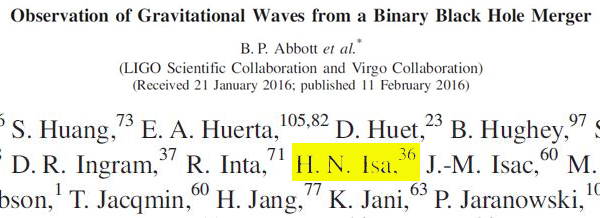Did You Know A Malaysian Woman Was One Of The Scientists Who Proved Einstein's Theory?
Hafizah Noor Isa is part of the research team that discovered gravitational waves.
Last week, the world was in celebration after physicists confirmed Albert Einstein’s theory through the discovery of gravitational waves.
There are calls for more celebration for Malaysians as a Malaysian woman is among the group of scientists that made one of the greatest scientific breakthroughs in history!
Hafizah Noor Isa, a PhD candidate at the University of Glasgow, is among those who wrote the scientific paper, ‘Observation of Gravitational Waves from a Binary Black Hole Merger’, which grabbed international headlines last week.
Hafizah’s involvement in the historic finding was discussed by the academia after Universiti Putra Malaysia physics professor Hishamuddin Zainuddin shared excerpts of the paper on his Facebook page.
Hafizah, a former student and researcher at Universiti Teknologi Malaysia (UTM) and Universiti Islam Antarabangsa (UIA) is one of the 1,004 authors listed in the ground-breaking paper
Hafizah was involved in the United States’ LIGO-led (Laser Interferometer Gravitational-Wave Observatory) project through her work in the GEO600 experiment.
The GEO600 is part of a worldwide network of gravitational wave detectors.
"All members of GEO600 are also members of the LIGO Scientific Collaboration," the LIGO website states.
Now that Einstein's general theory of relativity has finally been proven, many scientists around the world, including prominent British physicist and black-hole theorist Stephan Hawking, have expressed a great deal of excitement as this new discovery could revolutionise the field of astronomy
“These results confirm several very important predictions of Einstein’s theory of general relativity,” Hawking said in a BBC interview.
“It confirms the existence of gravitational waves directly.”
“Gravitational waves provide a completely new way of looking at the universe,” said Hawking.
“The ability to detect them has the potential to revolutionize astronomy.”


